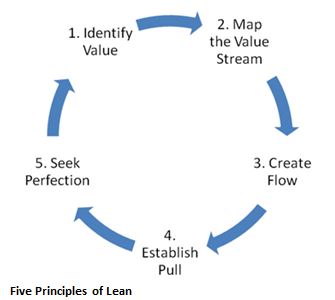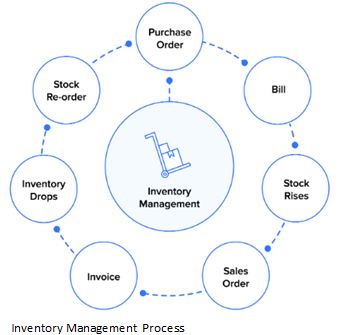IOTA as a Potential Enabler of Reducing Manufacturing Waste
The manufacturing sector faces the challenge of production process as compared to the developing countries specially when consumers demand customized production in shorter time. In order to remain competitive, it needs to become autonomous, focus on cost reduction and minimize wastage. Waste removal increases the profitability of any business. This prompts us to think on the few of the deadly wastes that could exist in any manufacturing process which is rooted in Japan and are well-defined in the Toyota production system (TPS). To eliminate each waste, we must understand the source of waste and the immediate impact it has on the business. A deep dive on the wastes depict the non-value-added steps that create obstacles to the workflow. For a typical manufacturing process which comprises of cutting & casting, assembly, changeovers, maintenance and inspection the value-added steps are those which directly addresses a customer’s need. In this case cutting, casting and assembly hold a significant value which needs to be focused on, while other non-value-added works can be eliminated or minimized to improve the process. While, Toyota production system also recognizes preventive and corrective maintenance which is still opted by lot of companies despite other options it should be minimized too.
Wastes and Profitability Relevance – To address the wastage issue all operation wastes such as downtimes, lead-time variance, inventory management, re-working on the quality aspect and delay of orders for delivery should be considered while making estimations.

During the economic recession companies generally take measures to reduce costs such as layoff labors, reduce wages, furloughing employees or re-negotiate for procurements and operations. However, this approach might work for a shorter period unless the enterprise adopts a culture of continuous improvement. This puts us on re-thinking the five principles of lean defined by value that adds to the customer needs, the value stream, making the product flow eliminating all the obstacles that disturbs the process, establish a pull by producing as per the customer demand and strive for perfection. Thus, it is important to establish practices to minimize the generation of waste. Though there are several ways to reduce wastes such as reducing packaging materials, volume reduction, establishing a predictive maintenance schedule, warehouse management etc., efficient inventory management may help in witnessing a cost benefits by controlling and reducing the amount of excess raw materials used in the manufacturing process helping to bring down the amount of waste generated and procure as per the requirement for a specific period of time. Track and trace of an asset or a product remains a significant concern too.
IOTA as An Enabler – The IOTA Foundation, a non-profit foundation focused on distributed ledger technology (DLT) ecosystem supports in efficient inventory management. In addition, its Tangle technology provides track and trace solutions for assets in the manufacturing process. Track and trace have long been recognized for its ability to protect against counterfeiters and facilitate smooth recalls. Nonetheless, today’s manufacturers are strategizing to manage the entire ecosystem of their production facilities. Coming to inventory management critical record keeping for manufacturers is mission critical. IOTA has the potential to disrupt the entire database management system and record keeping by enabling micro transactions in the Internet of Things (IoT), act as a facilitator in the IDoT (Identity of Things) along with data storage, security and validation. A typical inventory process may have several procurement sources (suppliers), storage allotments or locations, quantity based on product designs and customization, stock re-orders etc. A typical stock taking estimation will comprise of all the intricacies of this process. It is a constant flow from procurement to disposition, as it enters a physical storage location the event must be recorded in a ledger.

There is a constant opportunity to correct the real flow of inventory, specifically with the storage location and how often the product should be re-ordered. The transactions of record keeping will have checkpoints through Tangle, maintaining the fidelity of each asset/raw materials involved in the inventory management process by creating a SEED and attaching a wallet to the Tangle. Tangle communication would exist using micro-service architecture talking to the internal nodes, asynchronously to avoid being a bottle neck during the workflow. A similar approach is identified in the track and trace where the IOTA enabled solution will provide a unique digital identity for each asset including identity and other details of the organization having custody of it, all of which can be viewed and managed through the application. The advantage lies in the IOTA-powered solution that requires no integration with different legacy systems enabling a secured information update to the customers and return of the assets without necessarily sharing any proprietary information with competitors.
This also enables Just-in-Time (JIT) shipments so that manufacturers don’t have to keep as many components and production materials on hand, enabling lowering of costs. Potentially IOTA offers many attributes in addition to minimizing waste and managing manufacturing process. While lot of major industrial groups like Robert Bosch, the energy firm Innogy are building use cases to automate machine transactions and simplify processes, IOTA will be the next standardized approach for many verticals.
![]() This article was written by Titli Chatterjee. She has been leading ER&D/Industry 4.0 research initiatives of NASSCOM, having experience in research and consulting in the areas of emerging technologies and engineering services. In her current role as Manager – Research, she is closely working with the industry leaders, start-ups, government and other stakeholders in formulating a roadmap in disruptive technologies for Indian IT-BPM industry and highlighting how technology can be a game changer at the industrial front.
This article was written by Titli Chatterjee. She has been leading ER&D/Industry 4.0 research initiatives of NASSCOM, having experience in research and consulting in the areas of emerging technologies and engineering services. In her current role as Manager – Research, she is closely working with the industry leaders, start-ups, government and other stakeholders in formulating a roadmap in disruptive technologies for Indian IT-BPM industry and highlighting how technology can be a game changer at the industrial front.


